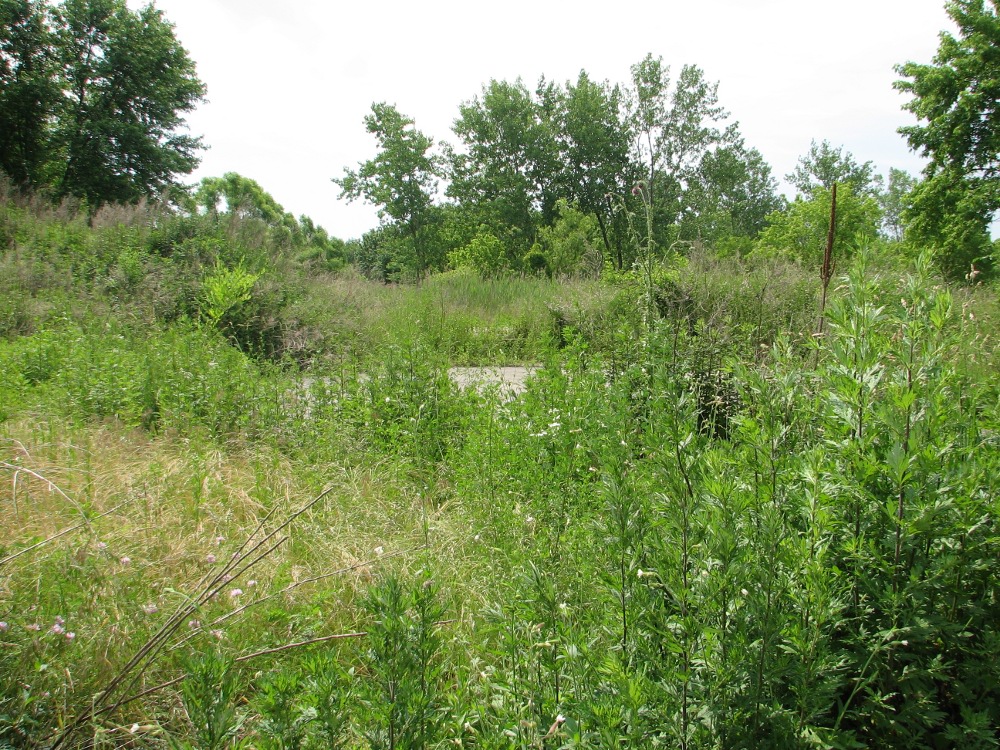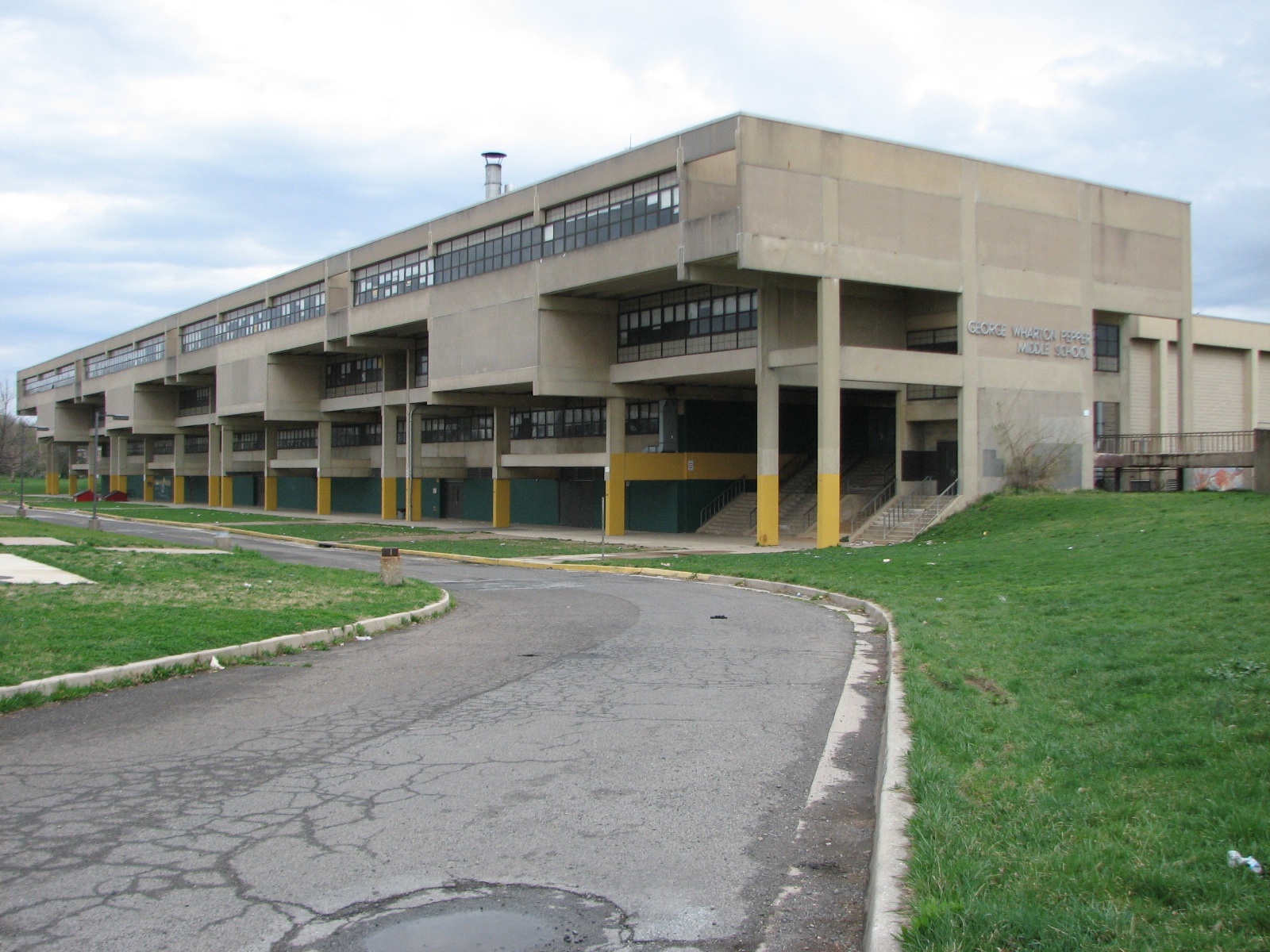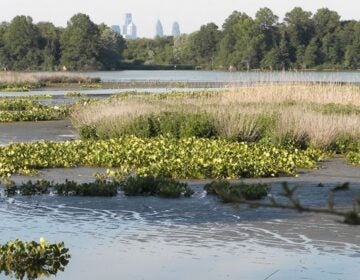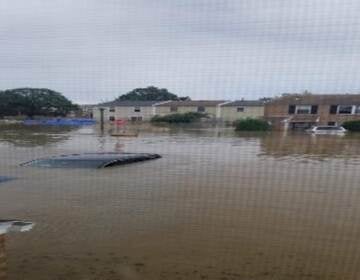New path for Eastwick opens up one year after termination of urban-renewal agreement

It’s been one year since the Philadelphia Redevelopment Authority (PRA) gave the Eastwick community and environmental advocates new hope. On a rainy afternoon, two days before Christmas of 2015, the Redevelopment Authority’s board voted unanimously to officially end the largest urban renewal project in the country, ending a process that started in 1961, encompassing 2,500 acres of land and four stages of development.
The Eastwick Friends and Neighborhood Coalition had been fighting since 2012 to stop redevelopment plans for more than 100 acres, including a new 722-unit apartment complex proposed by New Eastwick Corporation/Korman, a 1,000 car parking lot, and additional acres transferred to the Philadelphia International Airport.
Eastwick is within FEMA’s Special Hazard Area or 100-year floodplain, a high-risk flooding zone, and it was built on the Darby Creek’s marshlands. There used to be 6,000 acres of wetlands in this area, the John Heinz National Wildlife Refuge now protects less than 200. The marshland acts as a buffer that absorbs stormwater and purifies the Darby and Cobbs creeks before entering the Delaware. Residents feared the new development would leave the neighborhood with less permeable land and more density, which would only increase their already traumatic flooding problems and the potential contamination spread from two adjacent Superfund sites.
The years-long fight ended with a victory for Eastwick neighbors. After decades of neglect, the PRA and the city committed to include Eastwick residents in a community-oriented planning process for their neighborhood. The resolution adopted by the PRA board on December 23, 2015, authorized the termination of the redevelopment agreement with New Eastwick Corporation and a $5 million settlement to take control back of the 135 undeveloped acres.
Now, a year later, PRA’s board approved a contract with Interface Studio, a Philadelphia-based urban planning studio to conduct a nine-month planning study for the Eastwick public land. Interface developed the Philadelphia Land Bank’s strategic plan and recently led a team of consultants to deliver baseline data to inform the city’s Rebuild initiative . According to a request for proposals (RFP), issued in August, the study will “lead to a preferred vision, development plan, and feasibility study for identified vacant land and buildings in Eastwick currently held by the PRA and School District of Philadelphia.”
A total of 29 contractors and subcontractors attended a pre-bid conference on September 15th or expressed an interest in bidding, but only eight submitted responses, according to PRA. The selection committee included representatives of PRA, Philadelphia City Planning Commission, the Office of Sustainability, Philadelphia International Airport, and two community representatives selected by District Councilman Kenyatta Johnson.
Interface Studio does “a very thoughtful job in issues of equity and community engagement,” Amy Laura Cahn, told PlanPhilly. Cahn, a layer from the Public Interest Law Center who has been representing the Eastwick community for years, hasn’t seen the firm’s proposal yet. “The selection sends a great message because those are two of the big priorities.”
District Councilman Kenyatta Johnson, who has been acting as a facilitator between the community and the City, said this year he has had several community meetings with city and federal agencies, such as the Environmental Protection Agency, to look at the overall planning process and vision for Eastwick.
“So it’s an exciting time, and the community has spoken,” Johnson told PlanPhilly. “They express how they haven’t have that voice and this is an opportunity for them to be at the table, to look at the future of their neighborhood. So this is a new day, is the start of a new process.”
Interface Studio will have to deliver a vision plan for 134.19 acres, including the former Pepper Middle School site and the former Communications Technology High School site.

According to Cahn, there was “some uncertainty about whether the school sites would be sold in the interim.” In November, multiple community leaders sent two open letters to the Philadelphia School Reform Commission, one was signed by Eastwick Friends and Neighbors, and the School District chose not to proceed with the sale of Pepper and ComTech at this time. “The message we have gotten is that School District now intends to include the properties fully in the planning process and await the results of the process before making a sale,” Cahn said.
The Lower Southwest District Plan, released earlier this year, points out “today’s environment of Lower Eastwick is complicated by many competing interests and impacts.” While there is a strong need for better transit and pedestrian connections, and there exists potential for new commercial and industrial development, these could stand in direct conflict with the need to preserve land and reduce flooding. Certain types of uses wouldn’t be permitted within FEMA’s 100-year floodplain or on wetlands, while others must be more strictly regulated and elevated to withstand inundation.
Philadelphia International Airport has long been interested in acquiring additional surrounding land so it can expand. A bill to transfer land in Eastwick from the Redevelopment Authority to the airport was held in City Council back in 2012. Airport expansion could prove a significant point of conflict with the interests of the Heinz Wildlife Refuge, as well as the large, long-tenured Eastwick Community Garden currently located on Airport-owned land and is leased on a yearly basis. At the same time, a bigger airport zone increases the area of incompatibility with residential homes, schools, or hospitals because of noise and a smaller buffer zone between Eastwick and I-95.
Another big challenge for the planning process in Eastwick will be to meaningfully engage the community and coordinate input from a large list of stakeholders. The RFP lists 18 possible stakeholder groups, which extends to city agencies like the Water Department, the Office of Emergency Management, SEPTA, and potential developers. The scope of Interface’s work has to include a public participation plan, including interviews, roundtable discussions, and at least three public meetings.
“Urban renewal created Eastwick and this is really an opportunity to create a different path,” Cahn said to PlanPhilly. “One that is both committed to the community needs and also thinking about sustainability challenges. This is an opportunity to think about what development means for a community in face of climate change.”
For Cahn, a last challenge of the planning process will be to heal the historical trauma that Eastwick has endured. But she’s optimistic. The commitment shown by Mayor Jim Kenney and Councilman Johnson makes her believe that the process will give voice to and honor the community.
“It has been a challenging year, truly developmental for Eastwick,” Terry Williams, president of Eastwick Friends & Neighbors Coalition told PlanPhilly in an email. “We are encouraged by the potential that the Eastwick Community Planning Process has to benefit our residents and the City of Philadelphia as well.”
For Johnson the biggest challenge is to make sure that the resources needed for the plan are available on a city and federal level, and that everyone involved has a clear understanding of Eastwick’s community, challenges, and history.
“I’m very optimistic about the partnership of the City of Philadelphia and the Eastwick community,” said Johnson. “Their voice will be heard.”
PRA will sign the contract with the consultants and officially launch the study in January.
WHYY is your source for fact-based, in-depth journalism and information. As a nonprofit organization, we rely on financial support from readers like you. Please give today.






